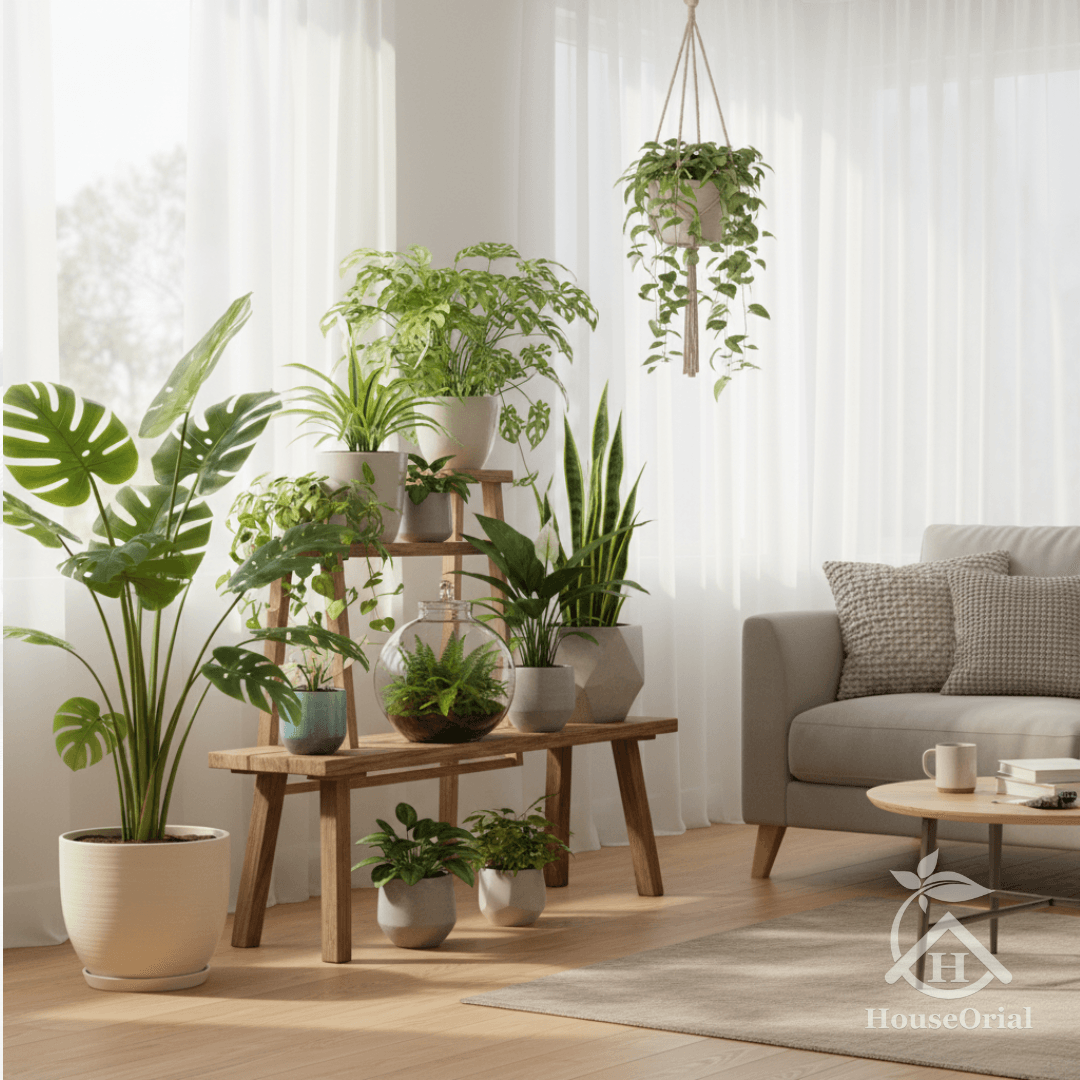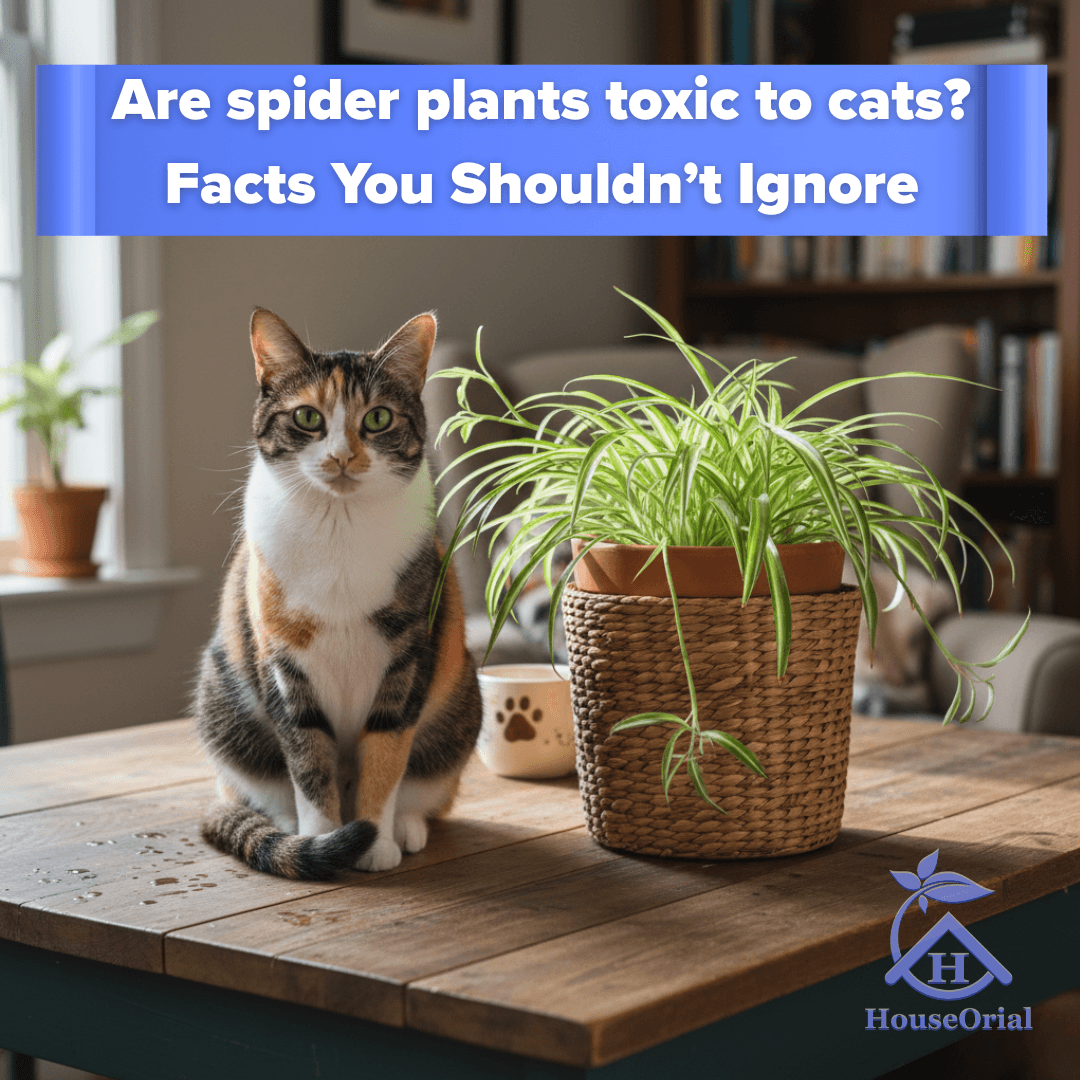Indoor gardening is not just a hobby or a way to enhance the beauty of your home, but it also significantly improves your mental health. Having an indoor garden at home is always a pleasant and exciting experience. Indoor plants purify the air in your home, improve mood, and reduce stress. As a gardening expert, I can confidently say that choosing the right indoor plants can transform any living space into a peaceful, green sanctuary. Here is a list of the top 10 indoor plants that are easy to grow, require low maintenance, and are suitable for both new and experienced gardeners.
Top 10 Indoor Plants Perfect for Every Room
1. Snake Plants (Scientific name: Sansevieria trifasciata)
The Snake Plant, also called Sansevieria, is one of the easiest indoor plants to grow. It can survive in low light, needs very little water, and naturally helps purify the air in your home. This makes it perfect for bedrooms, living rooms, and offices. Water it every 2–3 weeks and let the soil dry completely between waterings. According to NASA’s Clean Air Study, Snake Plants can remove harmful chemicals like benzene, formaldehyde, and trichloroethylene from indoor air, making it a great choice for a healthier home.

2. Spider plants (Scientific name: Chlorophytum comosum)
Spider plants, scientifically known as Chlorophytum comosum, are one of the most popular houseplants for their beauty, ease of care, and air-purifying properties. Their long, arching green leaves with white stripes brighten up any room, while their short branches make them easy to propagate. Spider plants thrive in bright, indirect sunlight and require regular watering to keep the soil slightly moist. One of the main benefits of spider plants is that they help remove harmful indoor pollutants like formaldehyde, benzene, and xylene, which naturally improves air quality. Additionally, studies have shown that spider plants can help reduce stress, improve mood, and increase overall well-being, making them perfect for bedrooms, living rooms, and offices. Regularly trimming off brown leaf tips keeps the plant healthy and ensures that it continues to add interest and freshness to your indoor space.

3. Peace Lily (Scientific name: Spathiphyllum)
Peace Lily (Spathiphyllum) is perfect for homeowners who want elegance and ease. This plant blooms indoors and improves air quality, creating a calm and peaceful environment. Peace Lilies grow well in low to moderate indirect light, and the soil should remain consistently moist. Wiping the leaves regularly not only keeps them dust-free but also enhances their glossy appearance.

4. Aloe Vera (Scientific name: Aloe barbadensis miller)
Aloe vera is not just a decorative plant but also a natural healer and air purifier. Growing Aloe Vera indoors is easy. Place it in bright, indirect sunlight and water it lightly every 2–3 weeks. Make sure the soil dries completely between watering to prevent overwatering.
Besides its medicinal benefits, Aloe Vera has other advantages for indoor spaces. Keeping it in the bedroom can improve air quality by removing toxins and releasing oxygen at night, which may help you sleep better. Its thick, succulent leaves also help maintain humidity, reduce indoor pollutants, and create a calm, relaxing atmosphere. This makes Aloe Vera an ideal plant for both health and decoration in any home.

5. Pothos (Scientific name: Epipremnum aureum)
Pothos is ideal for adding greenery to shelves, cabinets, or hanging baskets. Its trailing vines create a beautiful cascading effect. Pothos adapts to low or bright indirect light, and watering should be done when the top inch of soil feels dry. This versatile plant can grow in soil or water, making it perfect for creative indoor arrangements.

6. ZZ Plant (Scientific name: Zamioculcas zamiifolia)
ZZ Plant is the ultimate low-maintenance indoor plant. It tolerates low light conditions and infrequent watering, making it perfect for busy homes or offices. ZZ Plants store water in their roots, so letting the soil dry completely between watering ensures healthy growth.

7. Rubber Plant (Scientific name: Ficus elastica)
The Rubber Plant, scientifically known as Ficus elastica, is a striking indoor plant with large, glossy dark green leaves that instantly brighten any room. It thrives in bright, indirect sunlight but can also adapt to low-light areas. Water the plant when the top inch of soil feels dry, and make sure the soil drains well to prevent root rot. Rotating the plant regularly helps it grow evenly and keeps its leaves looking fresh and polished. Besides its beauty, the Rubber Plant can improve indoor air quality, making it both a decorative and functional addition to your home or office.

8. Chinese Evergreen (Scientific name: Aglaonema)
Chinese Evergreen (Aglaonema) is an excellent choice for low-light areas. Its colorful, patterned leaves bring life to any indoor space. Allow the soil to dry slightly between watering and keep the leaves dust-free to maintain its vibrant look.

9. Boston Fern (Scientific name: Nephrolepis exaltata)
Boston Fern adds lush greenery to your home with soft, feathery fronds. t thrives in indirect sunlight. It likes consistently moist soil. These qualities make it perfect for bathrooms, where humidity is naturally higher. Regular misting helps keep the fronds fresh and prevents them from drying out. Avoid direct sunlight, as it can scorch the delicate leaves. Besides looking beautiful, Boston Fern can improve indoor air quality. It creates a calm and refreshing atmosphere, making your bathroom a healthy and relaxing space.

10. Dracaena
Dracaena is a versatile plant. It can grow tall and elegant. This makes it perfect for corners and living spaces. Dracaena prefers moderate, indirect light. It can also tolerate low light, but growth may slow down. It needs watering every 1–2 weeks. Allow the soil to dry slightly between waterings to prevent root rot. Removing yellow or damaged leaves keeps the plant healthy. It also helps the plant look visually appealing. Dracaena can help improve indoor air quality by filtering out toxins, making your home healthier and more refreshing.

Ultimately, adding indoor plants to your home is an investment in both beauty and well-being. From hardy, air-purifying plants like Snake Plants and ZZ Plants to flowering Peace Lilies and lush Boston Ferns, there’s a perfect indoor plant for every space and lifestyle. As a gardening expert, I recommend starting with just a few plants and gradually expanding your indoor garden. This approach creates a balanced environment where both you and your plants can truly thrive.








